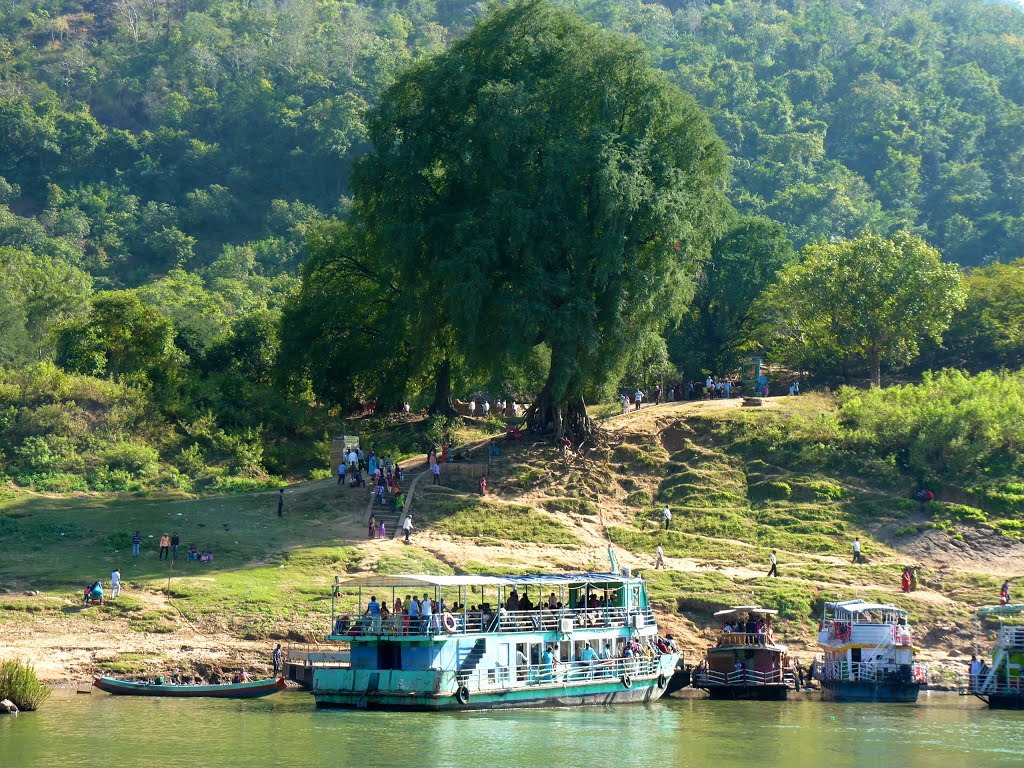Perantalapalli is village which comes in the Papikondalu tour package. So if you go to Papikondalu you will this place. Perantalapalli article covers topics like How to reach,Waterfalls, Temple, Papikondalu, Village, What To Do.
Interesting facts about Perantalapalli
• The perantalapalli temple has no official priest only the devotees worship the god here.
• The meeting point of sabari river with Godavari river can be clearly seen from this place.
• Eating non-vegetarian and consuming alcohol are completely prohibited in this place.
• The idol of Shiva under the shadow of snake was worshipped in Munivaatam.
About Perantalapalli
Perantalapalli, also known as the chain of cloudy hills, is located on the way to Papi Kondalu of Kunavaram. The meeting point of the Sabari River and the Godavari River can be seen from this location.Perantalapalli is sure to give you the ultimate experience with its picturesque scenery. Its beauty can be measured by the fact that it is called a range of cloudy hills. It is located between Kunavaram and Rajahmundry. This tribal village on the hill offers a view of the meeting point of the Sabari and Godavari rivers.
View of Papi Hills and Munivaatam Falls are breathtaking.It is a remote tribal village of Velerupadu mandal from the Khammam district. This village is located on the Kunavaram-Rajahmundry lane. A “Sri Krishna Munivaatam” was built in this village by Balananda Swamiji in 1927. Now Munivatam is maintained by a tribal Konda Reddys sect and the daily pooja are executed by them. Beautiful landscapes of Papi Hills and waterfalls in Munivaatam and the peaceful atmosphere of this tribal village will give visitors a pleasant look and peace. The idol of Shiva under the shadow of snake was installed in Munivaatam
History of Perantalapalli
History shows that one day Balananda Swamy (in 1926) had reached the village of Perantalapalli by traveling from Rajahmundry to Bhadrachalam on the Godavari River in a boat and stayed that night. He was delighted with the pleasant atmosphere and the scenery inside and around the place where he stayed whole night and he came out of the launch on the sand bed on the shore. Then a lady appeared to him and asked him to follow her and disappeared after reaching a spot on the bank covered with shrubs and streams.
He spent that night there and surprised after seeing the idol of Shiva under the snake shadow in the early morning and decided to build a mantapam there. That Mantapam is called Sri Krishna Munivaatam. No priest would come and perform pooja there. The devotees themselves pray to the god and execute the pooja after plunging into the Godavari River. It is strictly forbidden to eat non- vegetarian food and animal hunting.
All devotees must remain silent while they spend time there and also play in the munivaatam. Balananda Swamy after seeing the backwardness of the Konda Koyas tribe (Hill Reddys) decided to reform them and embarked on an online project by bringing them to the cultivated society. Later in 1969, a David Adam, a young and a resident of England, became a disciple of Swamiji and spent in this munivaatam until recently. Now, this munivatam is maintained by the tribes themselves.
Special Occasions / Best time to visit: This place can be visited any time throughout the year. But as it is part of papikondalu trip monsoon season could be the best time to visit perentalapalli.
Things to do at Perantalapalli: The main source of income for these tribes is their exceptional art of preparing bamboo items. They are beautiful and handmade objects. Flower vases were also present here. There are rocks present in the area outside the temple which makes a nice little trek. You can also see a perentalapalli waterfalls at the top of the hill and a water falls in a small stream. You can hear the sound of flowing water. This gives you a pleasant feeling.
Location: Perantalapalli village situated at Velairpadu Mandal in Khammam District.
Bhadrachalam to perantalapalli distance: 80 Kilometers
How To Reach: The only way to reach perentalapalli is by boat or cruise. In the trip of Papikondalu.

